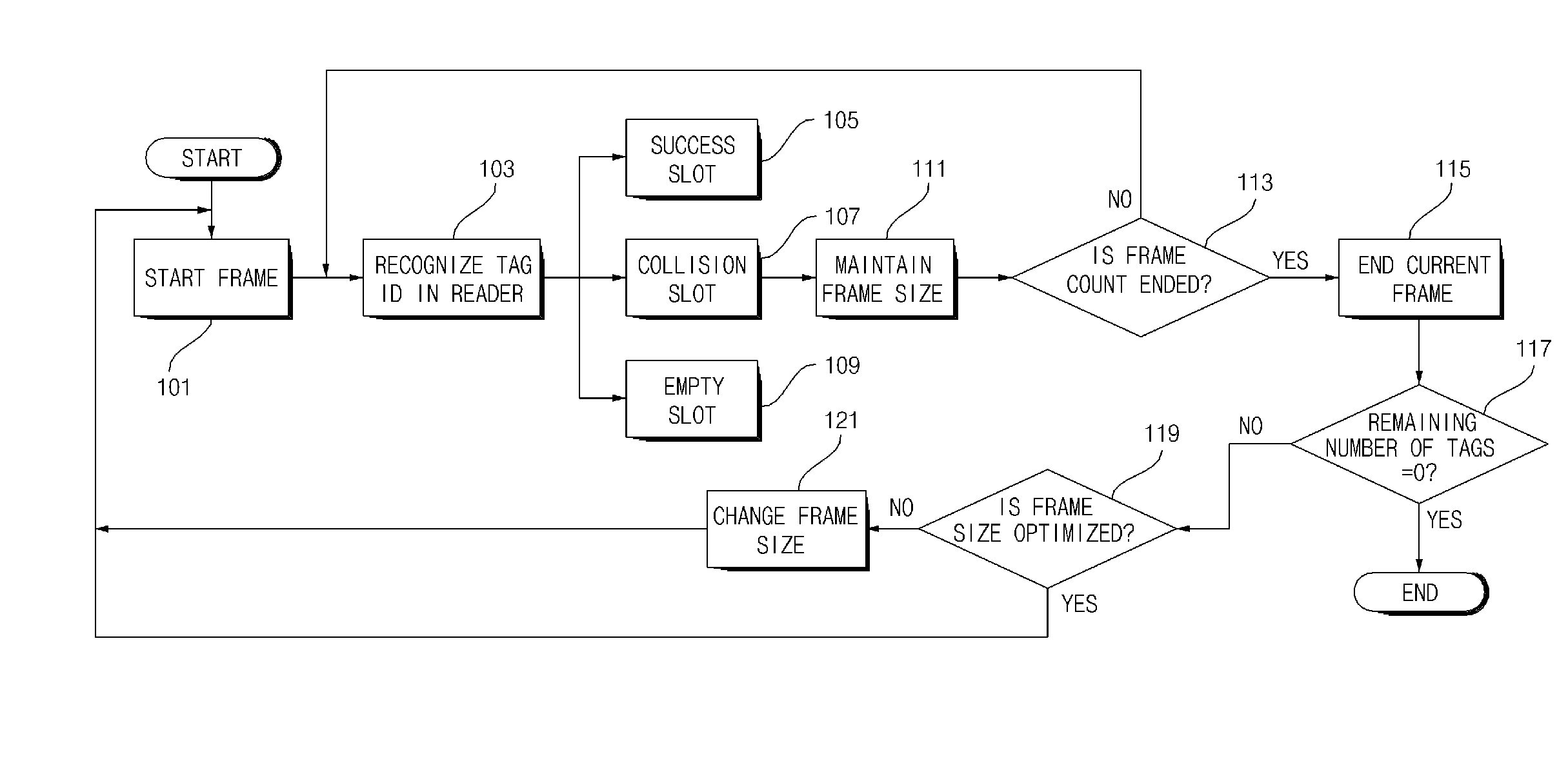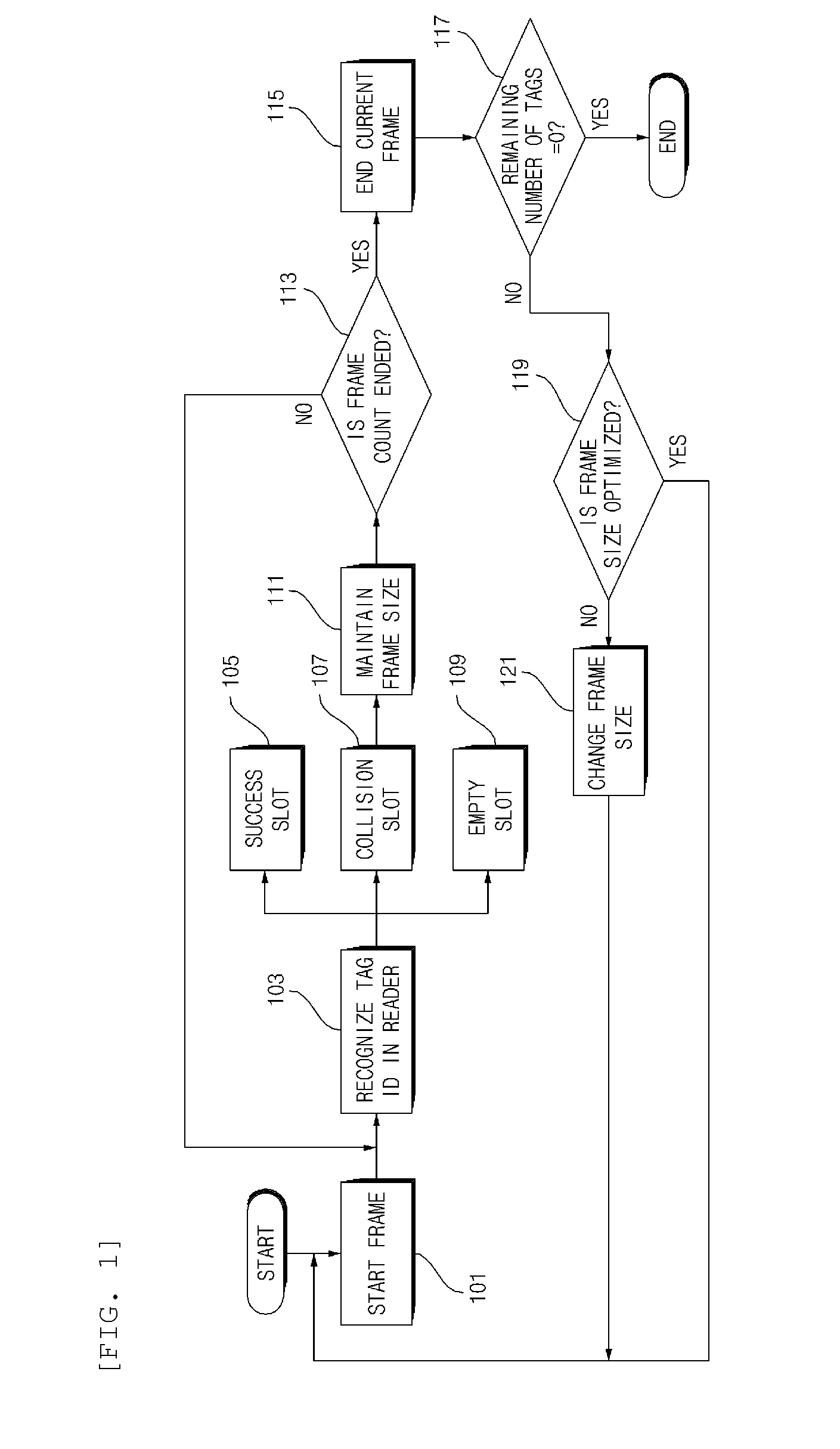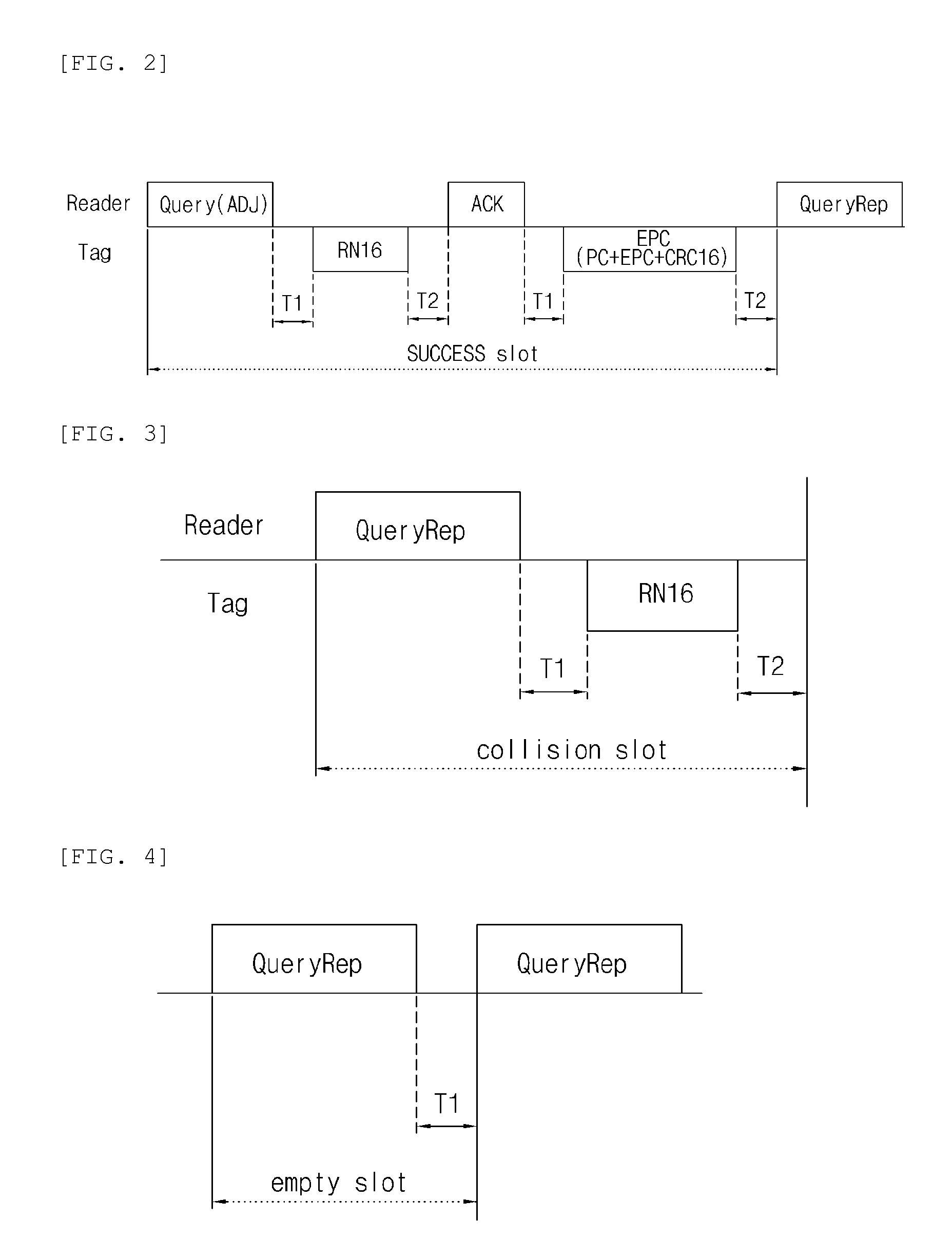Method of recognizing RFID tag for the purpose of preventing thourghput inversion and RFID reader performing the same
a technology of rfid and tag recognition, applied in the field of rfid, can solve the problems of rfid reliability, read rate and identification speed, standardization of technology, etc., and achieve the effects of preventing the occurrence of throughput loss, minimizing the tag recognition time, and optimizing the frame siz
- Summary
- Abstract
- Description
- Claims
- Application Information
AI Technical Summary
Benefits of technology
Problems solved by technology
Method used
Image
Examples
Embodiment Construction
[0041]Although the present invention can be variously modified and have several embodiments, the exemplary embodiments are illustrated in the accompanying drawings and will be described in detail in the detailed description. However, the present invention is not limited to the specific embodiments and should be construed as including all the changes, equivalents, and substitutions included in the spirit and scope of the present invention. In the following description and drawings, like components refer to like reference numerals.
[0042]Terms such as ‘first’, ‘second’, ‘A’, ‘B’, etc. can be used to describe various components, but the components are not limited to the terms. Terms described in the specification is used to discriminate one component from other components. For example, the first component may be called the second component without departing from the scope of the present invention. Likewise, the second component may be called the first component. The term ‘and / or’ includ...
PUM
 Login to View More
Login to View More Abstract
Description
Claims
Application Information
 Login to View More
Login to View More - R&D
- Intellectual Property
- Life Sciences
- Materials
- Tech Scout
- Unparalleled Data Quality
- Higher Quality Content
- 60% Fewer Hallucinations
Browse by: Latest US Patents, China's latest patents, Technical Efficacy Thesaurus, Application Domain, Technology Topic, Popular Technical Reports.
© 2025 PatSnap. All rights reserved.Legal|Privacy policy|Modern Slavery Act Transparency Statement|Sitemap|About US| Contact US: help@patsnap.com



